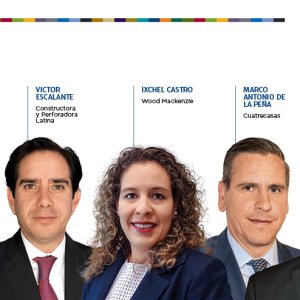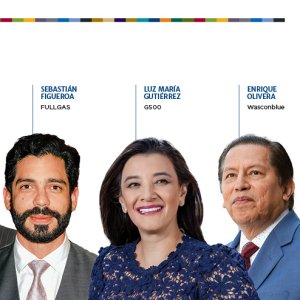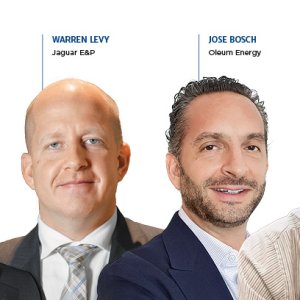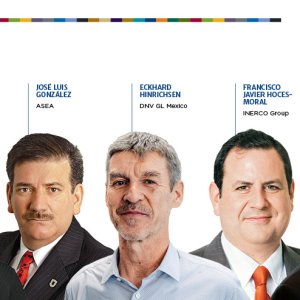
Mexico’s Urban Sustainability Ambitions and Challenges
Mariuz Calvet, Director of Sustainability at Banamex, began the panel by mentioning that the growth of the middle class and an increase in purchasing power results in a demand for larger infrastructure, yet urban planning is seldom carried out. With this in mind, large urban centers have to adopt thorough planning and turn it into a global trend. Marcos Pérez Calderon, Executive President of AALMAC, was the second speaker, who explained that as a Municipal President, he had a much clearer perspective on the importance of renewable energy and rescuing the concept of sustainable urban centers. “Esperanza is a municipality with 20,000 inhabitants, and to date most of its energy comes from a wind farm, making it the first municipality in sustainable energy use.” He said pollution was a serious urban issue because the techniques used to fight it limit the perspective on the problem. Municipalities also have an important cultural component, said Pérez Calderón, because the size of a municipality and its resources determine the strategies that can be implemented. In the case of the Hoy no Circula (No Drive Days) vehicle restrictions in Mexico City, Pérez Calderon mentioned that part of the frustration generated from the initiative came from the fact that Mexico City does not have enough public transport infrastructure to serve the people when this scheme was implemented.
The microphone was passed to María Elena Giner, General Manager of BECC, who said that during its 25 years of existence, BECC has invested close to US$7 billion in energy, and waste and water management projects on both sides of the border, giving the institution credibility among the Mexican authorities. Now BECC is working on rainwater. “Due to the prevalence of concrete in cities, rain water infiltration has decreased from 50% to 10%. Rainwater management has become using concrete to drive this water away from cities.” She noted that rainwater becomes heavily polluted on its journey through urban centers, ultimately affecting shared water bodies in the Mexico-US border. BECC is working on green technologies, which consist of using the environment to provide services, such as collecting rainwater and using it for urban infrastructure. For instance, a street’s central division can be concave so that it can collect water. “In order to promote this knowledge on both sides of the border, BECC is working on several fronts, such as the legal and the social ones. In the case of the latter, green technologies were implemented in Tuxcon, Arizona, because the local people demanded it.”
Miguel Breceda, General Coordinator of Green Development at INECC, shared the Institution’s view, saying that after talking with many specialists, the Institute concluded that a city cannot be sustainable, as many elements used in a city come from abroad. However, aiming at this unreachable goal is a positive approach. He points out that several metrics, such as the carbon footprint or the environmental footprint, are used to measure whether a city is sustainable compared to another one. Breceda urged authorities to address the issue of buildings, considering 70% of energy consumption in the northern hemisphere happens in buildings. Other important subjects that INECC works on include solid urban waste, air quality, mobility, industry, and energy. Breceda reiterated that land use in Mexico is rather disastrous, as SEDATU had already pointed out. “Statistics indicate 14% of social housing in Mexico is abandoned because the projects were built in remote places with no access to services.” He reminded the panel that for years, cities worked on densifying, which has resulted in problems already noted by the World Bank, such as congestion. “Now we should think about compact cities,” he told.
Finally, Enrique Vargas del Villar, President of ANAC and Municipal President of Huixquilucan, intervened. He began by talking about solid waste, “a costly issue from a government perspective even if citizens cannot see this. The main issue I see is the fact that we have not been able to generate power from garbage yet.” He added that sustainable development demands a cultural shift, also using the example of Hoy no Circula restrictions and the outrage generated while the main problem, pollution, is overlooked over the right to use private transportation. “Mobility is a problem resulting from geographical extension, which is something the authorities continuously work on. We need to work hand in hand with public transportation operators who are resisting certain changes and technologies, such as implementing gas-powered vehicles.” Vargas del Villar commented that municipalities are the last link in resource distribution, a situation that has to change. “Resources do not reach municipalities effectively, and these entities are in charge of providing public services. Without the best public services, we cannot become sustainable.” Calvet summarized the panel by returning to the need to coordinate all three government levels, issue guidelines that lead to sustainable development, and promote green infrastructure among municipalities.














